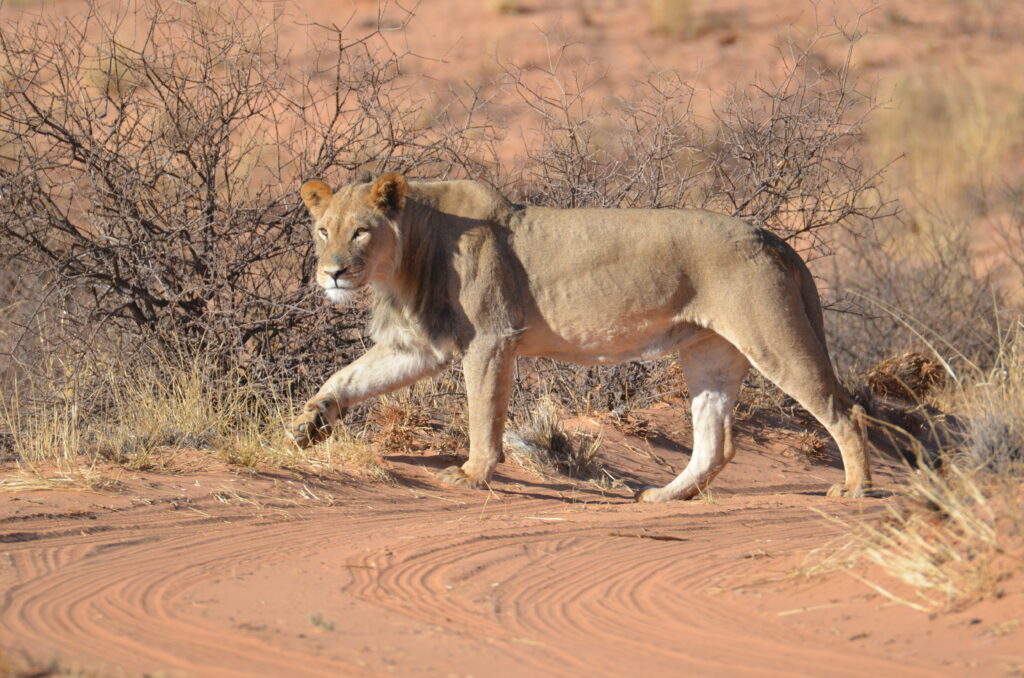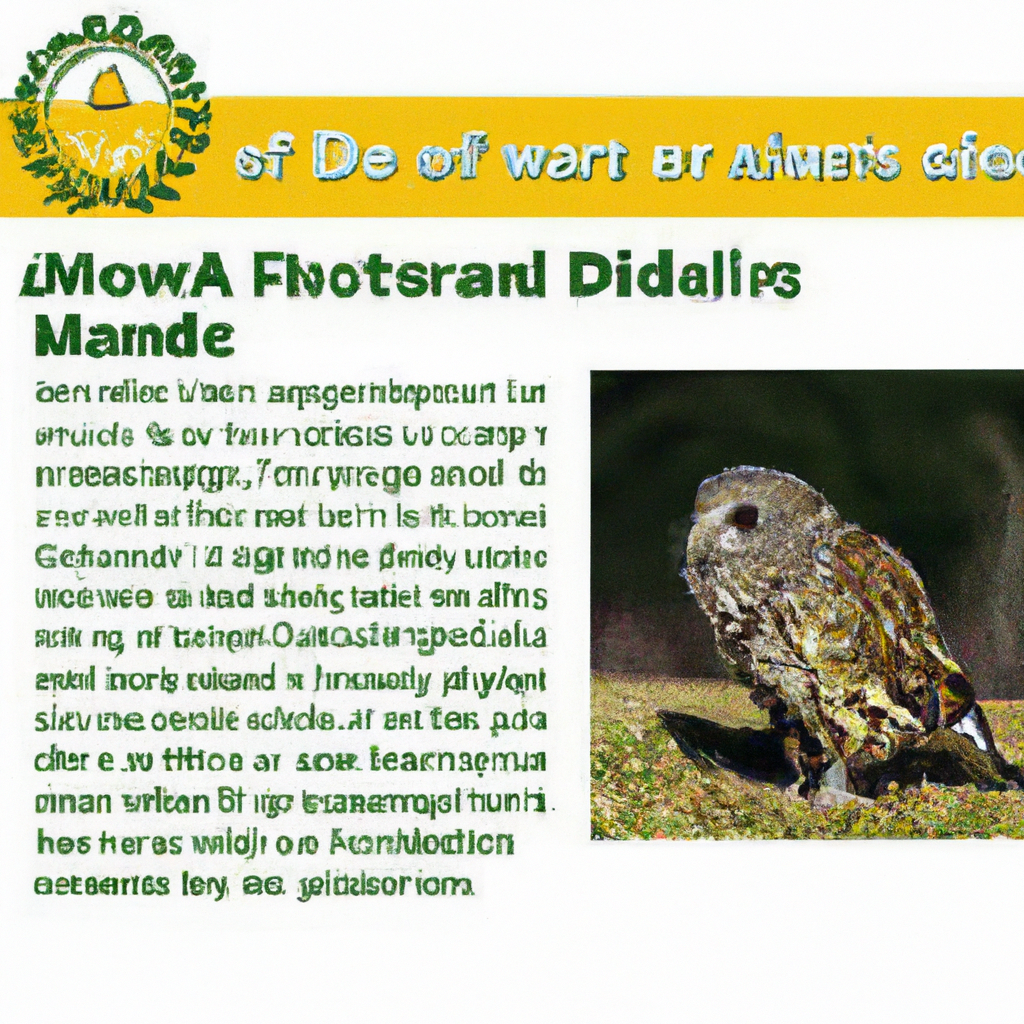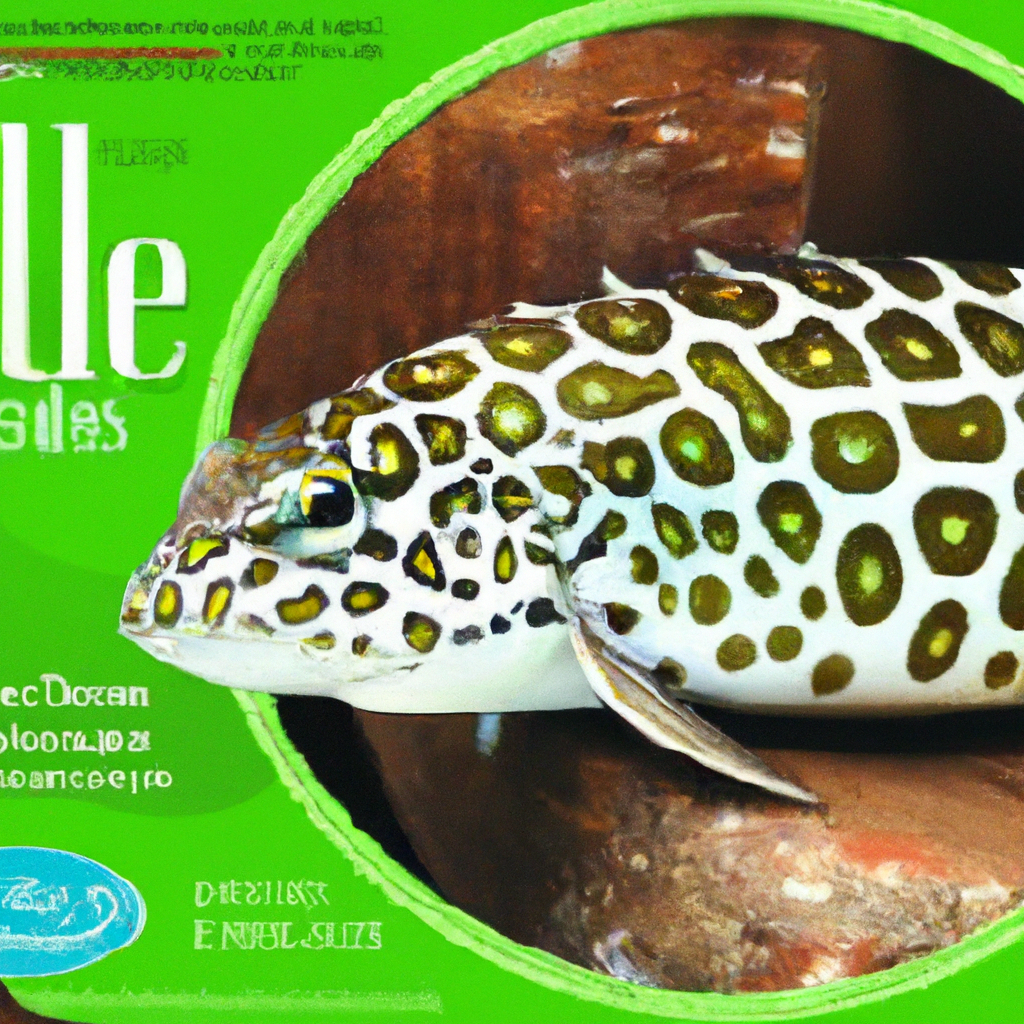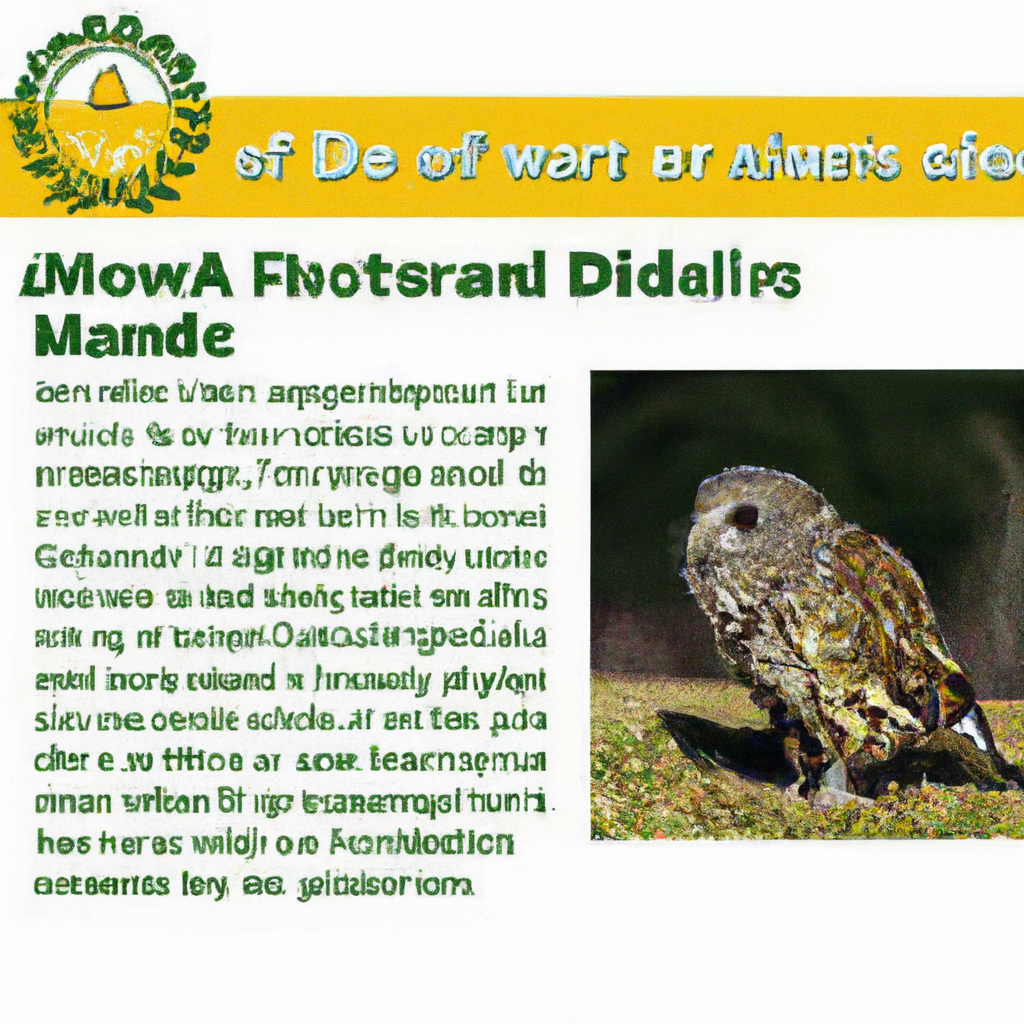If you’ve ever wondered about the fascinating wildlife that calls Maryland home, you’re in for a treat! Maryland is not just known for its beautiful landscapes and bustling cities; it is also home to a diverse array of common animals that are unique to the region. From the majestic white-tailed deer to the elusive red fox, Maryland offers a rich tapestry of wildlife for nature enthusiasts to explore. So, whether you’re a resident or a visitor, prepare to be amazed by the incredible variety of animals that thrive in the Old Line State. Maryland is home to a diverse range of animals, from mammals to reptiles, birds to insects. Whether you are exploring the state’s forests, fields, or coastlines, you are bound to encounter some fascinating creatures. Let’s take a closer look at some of the common animals you might come across in Maryland.
Mammals
White-Tailed Deer
One of the most iconic and recognizable mammals in Maryland is the white-tailed deer. These majestic creatures can be found in abundance throughout the state, from urban parks to rural forests. With their elegant stature and characteristic white tails, they are a sight to behold. White-tailed deer are herbivores and primarily feed on leaves, twigs, and grasses.
Eastern Cottontail
Another common mammal found in Maryland is the Eastern cottontail rabbit. With its soft brown fur and distinctive fluffy white tail, the Eastern cottontail is a familiar sight in meadows and suburban areas. These rabbits are known for their agility and speed, using their powerful hind legs to escape from predators. Eastern cottontails have a diverse diet, feeding on a variety of plants and grasses.
Red Fox
The red fox is a cunning and adaptable mammal found throughout Maryland. Known for their rusty-red fur and bushy tails, red foxes are skilled hunters and can be found in woodland areas as well as suburban neighborhoods. Their diet consists mainly of small mammals, birds, and invertebrates. Red foxes are also notorious for their distinctive vocalizations, which often include high-pitched screams and barks.
Gray Squirrel
Of course, no discussion of Maryland mammals would be complete without mentioning the gray squirrel. These agile and acrobatic creatures can be seen scampering through trees and leaping from branch to branch. With their bushy tails and vibrant gray fur, gray squirrels are a common sight in parks, woodlands, and even urban areas. They have a varied diet, feasting on nuts, seeds, fruits, and even bird eggs.
Eastern Chipmunk
If you venture into the forests and woodlands of Maryland, you are likely to encounter the Eastern chipmunk. These small, striped rodents are known for their energetic behavior and cheek pouches, which they use to gather and store food. Eastern chipmunks are omnivorous and have a diet that includes nuts, seeds, berries, fungi, and even small insects.
Raccoon
The mischievous raccoon is another familiar face in Maryland. With their distinctive black fur and iconic “bandit” mask, raccoons are highly adaptable and can be found in both rural and urban environments. These nocturnal creatures are known for their scavenging habits and omnivorous diet, which includes fruits, nuts, insects, small mammals, and even garbage.
Eastern Coyote
The Eastern coyote is a relatively recent addition to Maryland’s wildlife. These canines, larger than their western counterparts, have migrated into the state from other regions. Eastern coyotes are highly adaptable and can be found in a variety of habitats, from forests to suburban areas. Their diet includes small mammals, birds, fruits, vegetables, and even carrion.
Opossum
The opossum, with its unique appearance and prehensile tail, is another creature commonly found in Maryland. These nocturnal marsupials are known for their opportunistic feeding habits and ability to adapt to various environments. Opossums have a varied diet that includes insects, fruits, vegetables, small mammals, and carrion.
Striped Skunk
While their distinct smell may not be appealing, the striped skunk is an interesting mammal that calls Maryland home. With their black fur and iconic white stripes, skunks are known for their ability to spray a potent odor as a defense mechanism. These omnivorous creatures primarily feed on insects, rodents, fruits, and vegetables.
Eastern Mole
If you’ve ever noticed mysterious mounds of dirt in your yard, you may have encountered the Eastern mole. These subterranean mammals have adapted to a life underground, with large paws for digging and a long snout for feeding. Eastern moles primarily feed on insects and earthworms, and their tunneling activities can often be disruptive to lawns and gardens.
Birds
American Robin
The American robin, with its vibrant orange-red breast and melodic song, is a common bird found in Maryland. These migratory birds return each spring to breed and can be spotted hopping across lawns and foraging for earthworms. American robins also have a varied diet, including insects, fruits, and berries.
Northern Cardinal
The Northern cardinal is a beloved bird species famous for its vibrant red plumage and distinctive crest. These year-round residents of Maryland can be spotted perched in trees or hopping along the ground in search of seeds, berries, and insects. The male cardinal’s striking red color makes it a popular sight in backyards and gardens.
House Finch
The house finch is a small bird known for its cheerful song and colorful plumage. Male house finches have bright red feathers on their heads and chests, while females are more subtly colored. These adaptable birds can be found in a variety of habitats, including urban areas, and feed on seeds, fruits, and insects.
Mourning Dove
With its soft cooing call and gentle demeanor, the mourning dove is a common bird found in Maryland. These medium-sized birds have a delicate, gray-brown plumage and a slender body. Mourning doves primarily feed on seeds and grains and can often be seen foraging on the ground or perched on telephone wires.
Blue Jay
The blue jay is a striking bird known for its vibrant blue feathers and raucous calls. These intelligent birds are highly adaptable and can be found in woodlands, parks, and even residential areas throughout Maryland. Blue jays have a varied diet, feasting on nuts, seeds, insects, and occasionally small vertebrates.
Eastern Bluebird
The Eastern bluebird is a small thrush known for its beautiful blue plumage and melodious song. These birds are cavity nesters and can often be seen perched on fence posts and telephone wires, scouting for insects. Eastern bluebirds primarily feed on insects, berries, and fruits, and are cherished as symbols of happiness and good fortune.
Baltimore Oriole
With its vibrant orange plumage and melodious song, the Baltimore oriole is a striking bird commonly found in Maryland. These migratory birds return each spring to breed and can be spotted in trees and shrubs, feasting on insects, fruits, and nectar. The male oriole’s colors are reminiscent of the Maryland state flag and make it a favorite among birdwatchers.
American Goldfinch
The American goldfinch, with its bright yellow plumage and cheerful song, is a common sight in Maryland. These small birds are known for their acrobatic flight and can often be seen flitting from plant to plant, feasting on seeds from sunflowers, thistles, and other plants.
Red-Tailed Hawk
The red-tailed hawk is a majestic bird of prey commonly found in Maryland. With its broad wingspan and reddish-brown tail, this raptor can be seen soaring above fields and forests, searching for small mammals and birds. Red-tailed hawks are top predators in their environment and play an important role in maintaining ecosystem balance.
Bald Eagle
The bald eagle is a symbol of strength and freedom, and Maryland is fortunate to be a home to these magnificent birds. With their white heads and tails, contrasting against dark brown bodies, bald eagles are often seen near bodies of water, where they hunt for fish and waterfowl. Their resurgence in recent years is a testament to the success of conservation efforts.

Reptiles
Eastern Box Turtle
The Eastern box turtle is a terrestrial reptile commonly found in Maryland. With its dome-shaped shell and striking patterns, this turtle is a beloved species. Eastern box turtles can live for several decades and are known for their retractable head and legs, which they can tuck into their shell for protection. These omnivorous reptiles have a diet that includes insects, fruits, mushrooms, and even carrion.
Five-Lined Skink
The five-lined skink is a small lizard species found in Maryland’s forested areas. These reptiles are easily recognizable by the bright blue tail of juvenile individuals, which fades as they mature into adults. Five-lined skinks are active during the day and feed on a variety of insects and other invertebrates.
Northern Water Snake
As its name suggests, the Northern water snake is a semi-aquatic reptile commonly found near bodies of water in Maryland. These non-venomous snakes are often mistaken for their venomous counterparts, such as water moccasins or cottonmouths. Northern water snakes primarily feed on small fish, amphibians, and invertebrates.
Eastern Garter Snake
The Eastern garter snake is a common sight in Maryland’s grasslands, forests, and suburban areas. These harmless snakes are known for their distinctive yellow, green, and black stripes. Eastern garter snakes are active during the day and feed on a variety of prey, including frogs, worms, and small rodents.
Eastern Fence Lizard
The Eastern fence lizard, also known as the “blue belly lizard,” can be found in Maryland’s open woodlands and rocky areas. These lizards are characterized by their spiky scales and vibrant blue coloration on the males’ undersides. Eastern fence lizards primarily feed on insects and other arthropods.
Southern Painted Turtle
The southern painted turtle is a colorful reptile commonly found in Maryland’s ponds and wetland areas. With their red and yellow patterns on a dark-colored shell, painted turtles are a delight to observe. These turtles are omnivorous, eating both plants and animals, including insects, small fish, and aquatic vegetation.
Northern Brown Snake
The northern brown snake is a small and harmless snake found in Maryland. These snakes are typically found in forested areas, where they feed on earthworms, slugs, and insects. Northern brown snakes are excellent climbers and can often be seen basking on rocks and logs.
Eastern Rat Snake
The Eastern rat snake, also known as the black rat snake, is a non-venomous species found throughout Maryland. These snakes are excellent climbers and can often be found in trees or other elevated areas. Eastern rat snakes primarily feed on rodents, birds, and eggs, making them beneficial for controlling populations of pests.
Eastern Mud Turtle
The Eastern mud turtle is a small turtle species commonly found in Maryland’s freshwater habitats, such as streams, ponds, and swamps. With their dark shell and webbed feet, mud turtles are well-adapted for an aquatic lifestyle. These turtles primarily feed on aquatic insects, plants, and small invertebrates.
Rough Green Snake
The rough green snake is a slender and gentle reptile found in Maryland’s forested areas and wetlands. These non-venomous snakes are known for their bright green coloration, which acts as camouflage among vegetation. Rough green snakes primarily feed on insects, spiders, and small invertebrates.
Amphibians
American Toad
The American toad is a terrestrial amphibian commonly found in Maryland’s woodlands, gardens, and other moist habitats. Known for their dry, warty skin and distinctive mating calls, American toads play an important role in insect population control. They primarily feed on insects and other small invertebrates.
Eastern Newt
The Eastern newt is a small amphibian found in Maryland’s forests, ponds, and wetland areas. These unique creatures have a complex life cycle, including an aquatic larval stage and a terrestrial adult stage. Eastern newts primarily feed on small invertebrates, such as worms, snails, and insects.
Gray Treefrog
The gray treefrog is a small arboreal amphibian commonly found in Maryland’s forests and woodlands. These well-camouflaged frogs can change their color to match their surroundings, ranging from gray to green, depending on temperature and moisture levels. Gray treefrogs primarily feed on insects and other small invertebrates.
Northern Spring Peeper
The northern spring peeper is a small frog species known for its distinctive mating call, which sounds like a series of high-pitched peeps. These frogs can be found near bodies of water, such as ponds and wetlands, and primarily feed on small invertebrates, including insects and spiders.
American Bullfrog
The American bullfrog is one of the largest frog species found in Maryland. With its deep, resonating call, this amphibian is a familiar sound during the summer months. American bullfrogs inhabit a variety of aquatic habitats and have a diet that includes insects, small fish, and even other frogs.
Pickerel Frog
The pickerel frog is a medium-sized amphibian found in Maryland’s wetland areas and near bodies of water. These frogs have distinctive dark spots on their back and can be identified by their distinctive call, which sounds similar to a snore. Pickerel frogs primarily feed on insects, spiders, and other small invertebrates.
Eastern Spadefoot
The Eastern spadefoot is a unique and burrowing amphibian commonly found in Maryland’s sandy or loamy soils. Named after its spade-like protrusion on its hind feet, which it uses to dig, the Eastern spadefoot spends most of its life underground. These frogs primarily feed on insects and other small invertebrates.
Eastern Red-Spotted Newt
The Eastern red-spotted newt, also known as the red eft, is a bright orange amphibian found in Maryland’s forests and wetlands. These newts undergo an intriguing life cycle, starting as aquatic larvae, then transitioning into bright orange terrestrial adults before returning to the water to breed. Eastern red-spotted newts primarily feed on small invertebrates, such as insects and worms.
Marbled Salamander
The marbled salamander is a small and striking amphibian found in Maryland’s woodlands, especially near vernal pools. These salamanders have a unique black and white marbled pattern, which acts as camouflage among the leaf litter. Marbled salamanders primarily feed on small invertebrates, such as insects and worms.
Northern Leopard Frog
The northern leopard frog is a medium-sized amphibian commonly found in Maryland’s wetland areas, such as marshes and ponds. These frogs are known for their distinctive green coloration with dark spots, resembling a leopard’s pattern. Northern leopard frogs primarily feed on insects, spiders, and other small invertebrates.

Fish
Largemouth Bass
The largemouth bass is a popular sport fish found in Maryland’s freshwater lakes, rivers, and ponds. These large and powerful fish are known for their aggressive strikes and can provide an exciting challenge for anglers. Largemouth bass primarily feed on smaller fish, insects, and other aquatic creatures.
American Eel
The American eel is a unique and migratory fish species found in Maryland’s rivers, streams, and estuaries. These eels go through a remarkable life cycle, journeying from their freshwater habitat to the ocean to spawn before returning to freshwater to complete their life cycle. American eels primarily feed on small invertebrates and fish.
Brown Trout
Brown trout are a prized game fish found in Maryland’s coldwater streams and rivers. These beautiful and elusive fish are known for their intricate camouflage patterns and challenging behavior. Brown trout primarily feed on aquatic insects, small fish, and even small mammals in some cases.
White Perch
The white perch is a popular recreational fish found in Maryland’s brackish and freshwater environments. Similar in appearance to the striped bass, white perch are known for their distinctive silver sides and dark vertical stripes. These fish primarily feed on small crustaceans, insects, and other small fish.
Striped Bass
The striped bass, also known as rockfish, is an iconic fish species found in Maryland’s coastal waters and estuaries, such as the Chesapeake Bay. Known for their powerful, torpedo-shaped bodies and characteristic striped patterns, striped bass are highly sought after by anglers. These fish primarily feed on small fish, crabs, and shrimp.
Rainbow Trout
Rainbow trout are a popular game fish found in Maryland’s coldwater streams and rivers. These beautiful and colorful fish are often stocked in designated areas for recreational fishing. Rainbow trout primarily feed on aquatic insects, small fish, and even other trout.
Bluegill
The bluegill is a small and sunfish species found in Maryland’s freshwater lakes, ponds, and streams. Known for their vibrant blue and green coloration, bluegills are popular targets for anglers, especially those new to fishing. These fish primarily feed on aquatic insects, small invertebrates, and even small fish eggs.
Brook Trout
Brook trout, also known as speckled trout, are native to Maryland’s cool and clear mountain streams. These fish are highly valued for their beauty and ability to thrive in pristine habitats. Brook trout primarily feed on aquatic insects, small fish, and even mice or shrews that fall into the water.
Yellow Perch
Yellow perch are a common and popular freshwater fish found in Maryland’s freshwater lakes, rivers, and ponds. Known for their bright yellow coloration and distinctive vertical stripes, yellow perch are a sought-after species for both recreational and commercial fishing. These fish primarily feed on small crustaceans, insects, and other small fish.
Channel Catfish
The channel catfish is a species of catfish found in Maryland’s rivers, streams, and reservoirs. These fish are known for their smooth, scaleless skin and distinctive barbels around their mouths, which they use to locate food. Channel catfish are opportunistic feeders and primarily consume aquatic insects, small fish, and even carrion.
Insects
Honeybee
The honeybee is a vital insect species found in Maryland and around the world. These social insects play a crucial role in pollinating plants, including many food crops. Honeybees also produce honey, which is highly prized for its taste and nutritional benefits.
Ladybug
Ladybugs, or ladybirds, are well-known and beloved insects found in Maryland’s gardens and fields. These small, round beetles are often brightly colored and have distinctive spotted patterns. Ladybugs are considered beneficial insects, as they feed on pests such as aphids and help to keep garden populations in check.
Monarch Butterfly
The monarch butterfly is a beautiful and iconic insect found in Maryland and known for its long-distance migrations. These striking butterflies have distinctive orange and black wings, adorned with intricate patterns. Monarch butterflies undertake an incredible journey each year, traveling thousands of miles to reach their overwintering sites in Mexico.
Ant
Ants are highly social insects found in Maryland and around the world. These industrious creatures live in large colonies and have a complex social structure. Ants are known for their ability to work together in harmony, with designated roles for each individual. They play important roles in soil health, seed dispersal, and pest control.
Praying Mantis
The praying mantis is a fascinating insect found in Maryland’s gardens and natural areas. With their elongated bodies and prominent front legs used for capturing prey, praying mantises are highly effective hunters. These insects primarily feed on other insects and are considered beneficial for controlling pest populations.
Dragonfly
Dragonflies are mesmerizing and agile insects commonly found near ponds, lakes, and streams in Maryland. With their large, multifaceted eyes and long, slender bodies, dragonflies are well-equipped for catching their insect prey on the wing. These insects play an important role in controlling populations of mosquitoes and other pests.
Grasshopper
Grasshoppers are common insects found in Maryland’s grasslands, fields, and gardens. With their large hind legs and powerful jumping ability, grasshoppers are well-adapted for quick escapes from predators. These insects primarily feed on a variety of plants, including grasses and other vegetation.
Mosquito
Mosquitoes are well-known and often unwelcome insects found in Maryland’s outdoor areas. With their ability to transmit diseases such as West Nile virus and Zika virus, mosquitoes can be a nuisance and a health concern. These insects thrive in areas with standing water and feed on the blood of mammals, including humans.
Butterfly
In addition to the majestic monarch butterfly, Maryland is home to a variety of other butterfly species. These colorful insects can be found in gardens, meadows, and other areas rich in nectar-producing plants. Butterflies are important pollinators and play a vital role in the reproduction of many plant species.
Cicada
Cicadas are unique insects known for their loud and distinctive buzzing calls. Maryland experiences periodic outbreaks of periodical cicadas, which emerge in large numbers after spending several years underground. These insects primarily feed on plant sap and play a role in nutrient cycling in forest ecosystems.

Arachnids
Black Widow Spider
The black widow spider is a venomous arachnid found in Maryland. With its shiny black body and distinct red hourglass marking on the abdomen, the black widow is easily recognizable. These spiders prefer dark, sheltered areas and their venomous bite can pose a risk to humans.
Brown Recluse Spider
The brown recluse spider is another venomous arachnid that can be found in Maryland, although it is less common than the black widow. These spiders have a distinctive violin-shaped marking on their back and are known for their secretive habits. Brown recluse spiders can deliver a venomous bite that often requires medical attention.
Wolf Spider
Wolf spiders are large, non-venomous spiders commonly found in Maryland’s grasslands and wooded areas. These spiders are known for their excellent vision and hunting skills. Unlike many other spiders, wolf spiders do not build webs to catch prey but actively hunt down insects and other small invertebrates.
Orb-Weaver Spider
Orb-weaver spiders are a diverse group of spiders found in Maryland’s forests, gardens, and meadows. These spiders are known for their intricate orb-shaped webs, which they use to catch flying insects. Orb-weaver spiders can vary in size and coloration, but they are generally harmless to humans.
Jumping Spider
Jumping spiders are small and agile arachnids commonly found in Maryland’s gardens and natural areas. These spiders are known for their impressive jumping ability and acute vision. Jumping spiders are active hunters and feed on a variety of small insects.
Crab Spider
Crab spiders are a group of spiders known for their ability to change color to match their surroundings. Found in Maryland’s gardens and meadows, these spiders wait patiently on flowers or leaves to ambush unsuspecting insects. Crab spiders are not aggressive toward humans and pose no significant threat.
Harvestman
Harvestmen, also known as daddy longlegs, are arachnids commonly found in Maryland’s grasslands, forests, and gardens. Despite their spider-like appearance, harvestmen are not true spiders and do not possess venom glands. These arachnids primarily feed on small invertebrates and decaying plant matter.
Daddy Longlegs
Daddy longlegs, also known as harvestmen, are arachnids commonly found in Maryland’s grasslands, forests, and gardens. These creatures are easily recognized by their long, thin legs and small bodies. Daddy longlegs are not true spiders and do not produce venom. They primarily feed on small invertebrates and decaying plant matter.
Yellow Garden Spider
The yellow garden spider, also known as the golden silk orb-weaver, is a large and colorful spider commonly found in Maryland’s gardens and natural areas. Known for its striking yellow and black coloration, this spider weaves a distinctive orb-shaped web and primarily feeds on flying insects.
Fishing Spider
Fishing spiders are large and semi-aquatic spiders commonly found in Maryland’s wetland areas. These spiders are excellent swimmers and can walk on water, using their long legs to navigate. Fishing spiders primarily feed on aquatic insects, small fish, and even tadpoles.
Marine Animals
Atlantic Bottlenose Dolphin
Atlantic bottlenose dolphins are highly intelligent marine mammals frequently spotted off the coast of Maryland. These charismatic creatures are known for their acrobatic displays and playful behavior. Atlantic bottlenose dolphins primarily feed on fish and cephalopods.
Blue Crab
The blue crab is a native species and an iconic symbol of Maryland’s coastal waters. These crustaceans are known for their blue carapaces and red claws, making them instantly recognizable. Blue crabs are highly sought after for their succulent meat and are a staple of Maryland’s seafood industry.
Diamondback Terrapin
The diamondback terrapin is a unique and charismatic turtle species found in Maryland’s brackish waters, such as salt marshes and tidal creeks. Known for their striking diamond-shaped patterns on the shells, diamondback terrapins are the only turtles in the United States that inhabit brackish habitats.
American Horseshoe Crab
The American horseshoe crab is a fascinating and ancient marine arthropod commonly found along Maryland’s coastline. These creatures have remained relatively unchanged for millions of years and inhabit sandy shores and estuaries. American horseshoe crabs are important for medical research and have blue-blood that contains a unique clotting agent.
Striped Bass
Striped bass, also known as rockfish, are highly prized fish found in Maryland’s coastal waters and estuaries. These fish are known for their powerful swimming ability and feisty nature. Striped bass are an important recreational and commercial fishing species in Maryland.
Clam
Various types of clams can be found in the coastal waters of Maryland. Clams are bivalve mollusks that live buried in the sandy or muddy bottoms during low tide. These filter feeders play an important role in maintaining water quality and are valued for their succulent meat.
Oyster
Oysters are a keystone species in Maryland’s coastal ecosystems, and the state has a rich history of oyster harvesting. These bivalve mollusks are known for their ability to filter large volumes of water, improving water quality and creating habitat for other marine species. Oysters are also prized for their culinary qualities.
Sea Turtle
Various species of sea turtles can be found in Maryland’s coastal waters, including the loggerhead turtle and the critically endangered Kemp’s ridley turtle. These marine reptiles undertake incredible migrations and are highly vulnerable to human activities. Maryland’s coastal waters play an essential role in the conservation of these magnificent creatures.
Stingray
Stingrays are flat-bodied marine animals commonly found in Maryland’s coastal waters and estuaries. These graceful creatures have a venomous barb on their tails, which they use for defense. Stingrays primarily feed on small fish, crustaceans, and mollusks.
Fiddler Crab
Fiddler crabs are small crustaceans commonly found in Maryland’s salt marshes, mudflats, and sandy shores. These crabs are known for their distinctive asymmetrical claws, with the male having one larger claw used for communication and courtship displays. Fiddler crabs primarily feed on detritus and microscopic organisms in the mudflats.

Farm Animals
Holstein Cow
Holstein cows are a common sight in Maryland’s rural landscapes, particularly on dairy farms. These large, black-and-white cows are known for their high milk production and are a staple of the dairy industry. Holstein cows are well adapted to a variety of climates and can thrive in Maryland’s agricultural settings.
Horse
Horses have a long history in Maryland and are often celebrated for their beauty and grace. These majestic animals can be found on farms, equestrian facilities, and even in recreational areas. Horses are versatile and are used for various purposes, including riding, racing, and working.
Chicken
Chickens are ubiquitous farm animals found in Maryland, providing a valuable source of eggs and meat. These birds come in various breeds and can be found on small family farms as well as larger commercial operations. Chickens are relatively easy to care for and play an essential role in sustainable agriculture.
Sheep
Sheep are domesticated farm animals commonly found in Maryland’s agricultural landscapes. These woolly mammals are primarily raised for their wool, meat, and milk. Sheep farming plays an important role in Maryland’s agriculture and contributes to the local textile and food industries.
Goat
Goats are versatile farm animals found in Maryland, prized for their milk, meat, and fiber. These animals are well-suited for challenging environments and can thrive in Maryland’s diverse landscapes. Goats are valuable assets for small farms, contributing to sustainable agriculture and land management.
Pig
Pigs, or swine, are commonly raised farm animals found in Maryland’s agricultural communities. These intelligent and social animals provide a valuable source of meat and are often raised in large-scale operations. Pig farming plays an important role in Maryland’s agriculture and economy.
Duck
Ducks are waterfowl commonly found on Maryland’s farms, particularly those with ponds or other bodies of water. These birds are highly adapted for swimming and feeding on aquatic plants and invertebrates. Ducks are also raised for their meat and eggs, contributing to the local food industry.
Turkey
Turkeys are large birds commonly associated with holiday feasts, but they can also be found on Maryland’s farms year-round. These birds are valued for their meat and can be raised on both small family farms and larger commercial operations. Turkey farming contributes to Maryland’s diverse agriculture industry.
Donkey
Donkeys, or burros, can be found on farms and recreational areas throughout Maryland. These sturdy and intelligent animals are highly adaptable and can be used for working, transport, or as companion animals. Donkeys also play an important role in sustainable agriculture and land management.
Rabbit
Rabbits are small, furry mammals commonly found on Maryland’s farms and in pet households. These animals are prized for their meat, fur, and as companion animals. Rabbit farming is a common practice among small-scale farmers and contributes to the local food and fiber industries.
Pets
Cat
Cats are popular pets found in households throughout Maryland and provide companionship and entertainment. These independent and curious animals come in various breeds and have unique personalities. Cats are known for their grooming habits, agility, and ability to form strong bonds with their human companions.
Dog
Dogs are known as man’s best friend and are a common sight in Maryland’s households and communities. These loyal and affectionate animals come in various breeds and sizes, each with its own special traits and abilities. Dogs provide companionship, security, and assistance to their owners.
Hamster
Hamsters are small rodents commonly kept as pets in Maryland and around the world. These furry creatures are known for their burrowing behavior and nocturnal habits. Hamsters are low-maintenance pets, making them a popular choice for individuals and families.
Guinea Pig
Guinea pigs, or cavies, are popular pets enjoyed by people of all ages in Maryland. These small rodents are known for their friendly and sociable nature. Guinea pigs are interactive pets that require companionship, a balanced diet, and a safe environment to thrive.
Fish
Fish are beautiful and low-maintenance pets commonly found in Maryland’s households and offices. From a simple goldfish to a vibrant tropical species, fish come in various shapes, sizes, and colors. These aquatic pets provide a sense of tranquility and can be enjoyed by individuals of all ages.
Bird
Birds are captivating pets known for their colorful plumage, intelligence, and melodic songs. From small finches to larger parrots, birds are found in households throughout Maryland. These pets require specialized care, including a balanced diet, mental stimulation, and a clean environment.
Rabbit
Rabbits are popular pets known for their soft fur, floppy ears, and gentle disposition. These herbivorous mammals are gentle companions and can be found in households throughout Maryland. Rabbits require a suitable habitat, a balanced diet, and regular veterinary care to ensure their health and well-being.
Turtle
Turtles are fascinating and long-lived pets often kept in Maryland’s households and as educational animals. These reptiles require specialized care, including an appropriate habitat, proper nutrition, and regular monitoring of water quality. Turtles can be enjoyable and educational companions when provided with proper care.
Ferret
Ferrets are energetic and curious pets known for their mischievous behavior and playful nature. These small mammals are related to weasels and require specialized care, including a stimulating environment and social interaction. Ferrets can form strong bonds with their owners and provide hours of entertainment.
Snake
Snakes are unique and captivating pets found in some Maryland households. These reptiles come in various species and sizes, each with its own specific care requirements. Snake owners must be knowledgeable about the needs of their particular species and provide a suitable habitat and diet.
Whether you’re exploring Maryland’s diverse landscapes, visiting farms, or experiencing the joys of pet ownership, you are bound to encounter an incredible array of animals. From the majestic white-tailed deer to the captivating goldfinch, each species plays a vital role in Maryland’s ecosystems and cultural heritage. So keep your eyes peeled and your curiosity engaged as you discover the common animals that call Maryland home.


